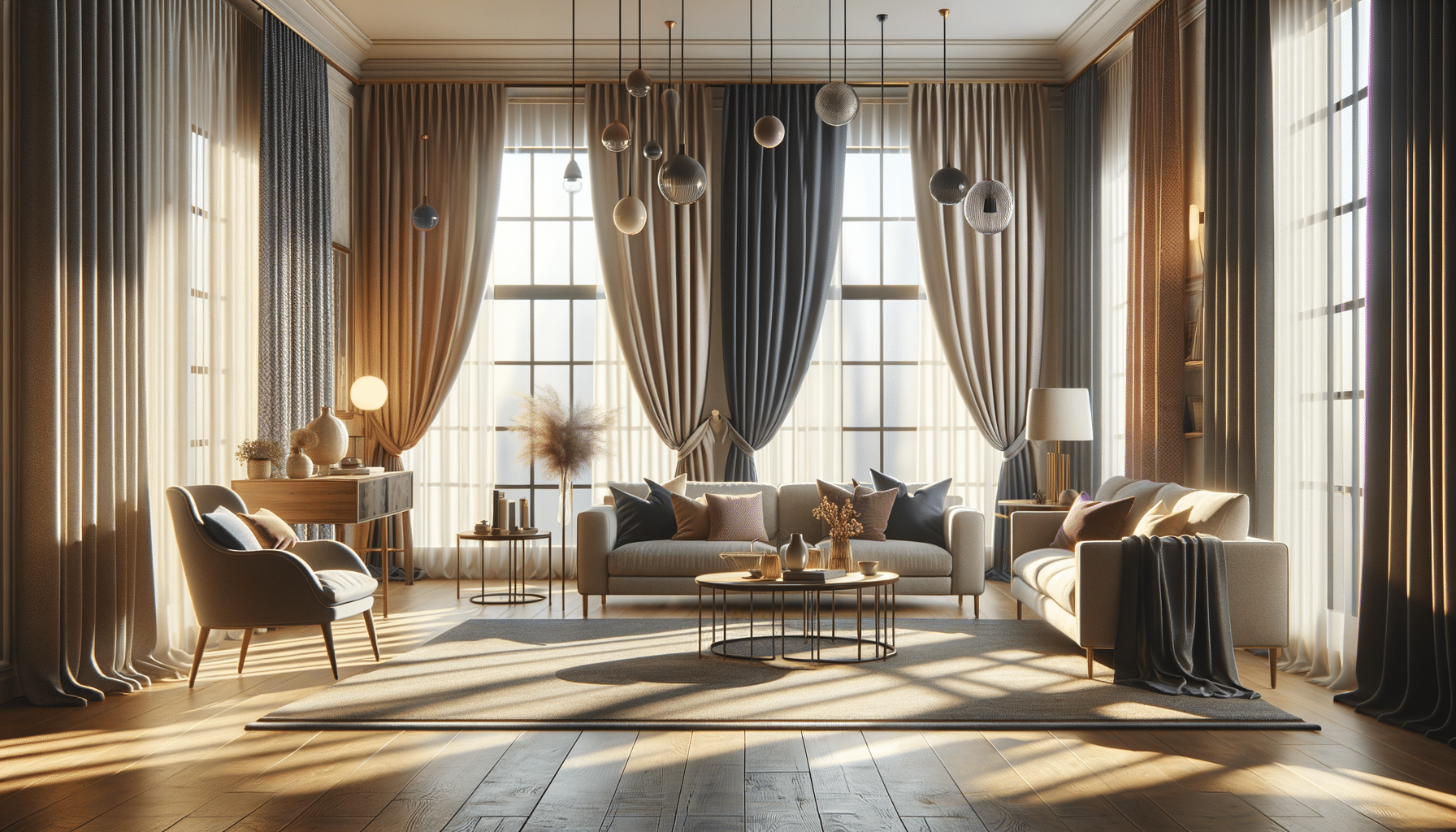
Choosing Living Room Curtains That Balance Style and Light
The Role of Curtains in Living Room Design
When it comes to interior design, living room curtains play a pivotal role in defining the aesthetic and functional aspects of a space. They are not just decorative elements but serve as practical solutions for controlling light, ensuring privacy, and enhancing the overall ambiance. In 2025, the trend of layering sheers and panels has gained popularity due to its effectiveness in managing light and creating a harmonious aesthetic. By combining different types of curtains, homeowners can achieve an ideal balance between natural light and privacy, while also adding depth and texture to the room.
Layering curtains involves using two or more types of curtain fabrics, typically a sheer and a heavier panel. This approach allows for flexibility in light control. For instance, during the day, sheer curtains can be drawn to let in sunlight while maintaining some level of privacy. In contrast, the heavier panels can be closed in the evening to block out light and provide insulation. This method not only offers practical benefits but also contributes to a sophisticated and stylish look that can be tailored to suit various interior themes.
Moreover, curtains can set the tone for the entire living room. They can introduce color, pattern, and texture, complementing the existing décor or serving as a focal point. The choice of fabric, color, and pattern can reflect personal style and influence the mood of the space. Whether you prefer a minimalist look with neutral tones or a bold statement with vibrant colors and intricate patterns, curtains offer endless possibilities to express creativity and enhance the living room’s design.
Material Choices for Living Room Curtains
Choosing the right material for living room curtains is crucial for achieving the desired look and functionality. The fabric you select will determine the curtain’s durability, light filtration, and aesthetic appeal. Common materials include cotton, linen, velvet, silk, and synthetic blends, each offering distinct advantages.
Cotton and linen are popular choices for their natural appearance and breathability. They are ideal for creating a relaxed and airy atmosphere, perfect for casual or contemporary settings. These fabrics are also easy to care for, making them practical for busy households. On the other hand, velvet and silk exude luxury and sophistication, making them suitable for formal living rooms. These materials have a rich texture and drape beautifully, adding elegance and warmth to the space.
Synthetic blends, such as polyester, offer durability and resistance to fading, making them a practical choice for rooms with high sun exposure. They are available in a wide range of colors and patterns, providing versatility in design. Additionally, these fabrics are often more affordable, making them accessible for various budgets.
When selecting curtain materials, consider the room’s function and the amount of natural light it receives. For rooms with ample sunlight, opt for fabrics with UV protection to prevent fading and damage. For spaces requiring more privacy or insulation, heavier materials or blackout linings can be beneficial. Ultimately, the right fabric choice will enhance the living room’s comfort and style, aligning with your personal preferences and lifestyle needs.
Color and Pattern Considerations
Color and pattern are essential elements in choosing living room curtains, as they can significantly impact the room’s visual appeal and atmosphere. The right combination can harmonize with the existing décor or create a striking contrast, depending on the desired effect.
Neutral colors like white, beige, and gray are timeless and versatile, complementing various interior styles. They provide a clean and understated backdrop that allows other elements in the room to shine. Neutral curtains are ideal for minimalist or modern spaces, where simplicity and elegance are prioritized. However, if you wish to inject personality and vibrancy into the room, consider curtains in bold colors like deep blue, emerald green, or mustard yellow. These hues can serve as accent pieces, drawing attention and adding depth to the design.
Patterns can also play a crucial role in enhancing the living room’s aesthetic. Geometric patterns, stripes, and florals are popular choices that can add interest and dimension to the space. When selecting patterned curtains, consider the scale of the pattern in relation to the room’s size. Large patterns can make a bold statement in spacious rooms, while smaller patterns are better suited for compact areas to avoid overwhelming the space.
Ultimately, the choice of color and pattern should reflect your personal style and the room’s overall theme. Whether you prefer a cohesive look with matching tones or an eclectic mix of patterns and colors, living room curtains offer a canvas for creativity and self-expression.
Functional Features of Living Room Curtains
Beyond aesthetics, living room curtains offer several functional benefits that enhance the comfort and efficiency of the space. One of the primary functions of curtains is light control. Depending on the fabric and style, curtains can filter, block, or diffuse natural light, creating the desired ambiance. Sheer curtains allow soft light to filter through, creating a gentle and inviting glow, while blackout curtains provide complete darkness, ideal for media rooms or bedrooms adjacent to the living room.
Privacy is another critical consideration when selecting curtains. In urban settings or homes with close neighbors, maintaining privacy is essential. Heavier fabrics or layered curtains can effectively shield the interior from outside view, ensuring a sense of security and seclusion.
Energy efficiency is an increasingly important factor in curtain selection. Insulated or thermal curtains can help regulate indoor temperatures by reducing heat loss during winter and blocking heat gain in summer. This not only enhances comfort but also contributes to energy savings, aligning with sustainable living practices.
Additionally, curtains can improve acoustics by absorbing sound, reducing echo, and minimizing noise from outside. This is particularly beneficial in open-plan living spaces or homes located in bustling areas. By choosing curtains with the right functional features, you can enhance the living room’s comfort, privacy, and energy efficiency, creating a more enjoyable and sustainable environment.
Installation and Maintenance Tips
Proper installation and maintenance of living room curtains are essential for ensuring their longevity and performance. Before installation, measure the window dimensions accurately to determine the appropriate curtain size. Curtains should ideally extend beyond the window frame, both in width and length, to achieve full coverage and a polished look.
When installing curtains, consider the height at which they are hung. Mounting the curtain rod closer to the ceiling can create the illusion of taller windows and higher ceilings, enhancing the room’s sense of space. Ensure that the rod is sturdy and properly anchored to support the weight of the curtains, especially if using heavier fabrics.
Maintenance is crucial for preserving the appearance and functionality of curtains. Regular cleaning, either through vacuuming or gentle washing, can prevent dust and allergens from accumulating. Follow the manufacturer’s care instructions to avoid damage to the fabric. For delicate materials like silk or velvet, professional cleaning may be necessary to maintain their quality.
Periodically inspect the curtain hardware, such as rods, brackets, and rings, to ensure they are secure and functioning correctly. Address any signs of wear or damage promptly to prevent further issues. By following these installation and maintenance tips, you can ensure that your living room curtains remain a beautiful and functional part of your home for years to come.

